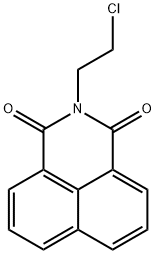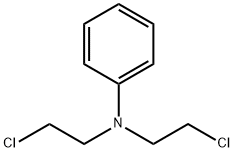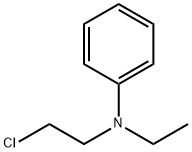2-Chloroethyldimethylamine
- CAS NO.:107-99-3
- Empirical Formula: C4H10ClN
- Molecular Weight: 107.58
- MDL number: MFCD00044495
- EINECS: 203-540-7
- SAFETY DATA SHEET (SDS)
- Update Date: 2024-12-18 14:08:52

What is 2-Chloroethyldimethylamine?
Definition
ChEBI: A tertiary amino compound consisting of one 2-chloroethyl and two methyl groups covalently bound to a nitrogen atom.
Safety Profile
Poison by an unspecified route. A systemic irritant. Mutation data reported. When heated to decomposition it emits highly toxic fumes of Cland NOx.
Carcinogenicity
No studies by common exposure routes have been conducted. In addition, dimethyl(b-chloroethyl) amine (and its hydrochloride salt) has not been evaluated by the IARC for carcinogenic potential.
Properties of 2-Chloroethyldimethylamine
| Boiling point: | 160.72°C (rough estimate) |
| Density | 0.9903 (rough estimate) |
| refractive index | 1.5320 (estimate) |
| pka | 8.40±0.28(Predicted) |
| EPA Substance Registry System | Ethanamine, 2-chloro-N,N-dimethyl- (107-99-3) |
Safety information for 2-Chloroethyldimethylamine
Computed Descriptors for 2-Chloroethyldimethylamine
New Products
4,4-Difluoropiperidine hydrochloride tert-butyl 9-methoxy-3-azaspiro[5.5]undecane-3-carboxylate Indole Methyl Resin N-Isopropylurea N,N-Dicyclohexylcarbodiimide(DCC) MELDRUMS ACID 5-METHYLISOXAZOLE-4-CARBOXYLIC ACID Magnessium Bis glycinate Zinc ascorbate 1-bromo-2-butyne 2-acetamidophenol 9(10H)-anthracenone Erythrosin B, 4-Piperidinopiperidine 2-((4-morpholinophenylamino) (methylthio) methylene) malononitrile 2,4-dihydroxybenzaldehyde 3-(4-morpholinophenylamino)-5-amino-1H-pyrazole-4-carbonitrile Methyl 2-methylquinoline-6-carboxylate 2,6-dichloro-4-nitropyridine 4-Bromo-2-chlorobenzonitrile 2-(benzylamino)acetic acid hydrochloride 4-(tert-Butoxycarbonylamino)but- 2-ynoic acid 3,4-dihydro-2H-benzo[b][1,4]dioxepine 1-Phenyl-1-cycloprppanecarboxylicacidRelated products of tetrahydrofuran

![6-CHLORO-9-[3-N-(2-CHLOROETHYL)ETHYLAMINO]PROPYLAMINO-2-METHOXYACRIDINE DIHYDROCHLORIDE](https://img.chemicalbook.in/CAS/GIF/146-59-8.gif)






You may like
-
 3-(4-amino-1-oxoisoindolin-2-yl)-1-methylpiperidine-2,6-dione 98%View Details
3-(4-amino-1-oxoisoindolin-2-yl)-1-methylpiperidine-2,6-dione 98%View Details -
 1-methylindoline-2,3-dione 98%View Details
1-methylindoline-2,3-dione 98%View Details
2058-74-4 -
 614-19-7 98%View Details
614-19-7 98%View Details
614-19-7 -
 3112-85-4 Methyl phenyl sulfone 98%View Details
3112-85-4 Methyl phenyl sulfone 98%View Details
3112-85-4 -
 20677-73-0 (2,2-diethoxyethyl)methylamine 98%View Details
20677-73-0 (2,2-diethoxyethyl)methylamine 98%View Details
20677-73-0 -
 3-(4-(hydroxyamino)-1-oxoisoindolin-2-yl)piperidine-2,6-dione 98%View Details
3-(4-(hydroxyamino)-1-oxoisoindolin-2-yl)piperidine-2,6-dione 98%View Details -
 57381-49-4 2-bromo-4-chlorobenzonitrile 98%View Details
57381-49-4 2-bromo-4-chlorobenzonitrile 98%View Details
57381-49-4 -
 4,6-dichloropyrimidine-5-carbaldehyde 98%View Details
4,6-dichloropyrimidine-5-carbaldehyde 98%View Details
5305-40-8
Statement: All products displayed on this website are only used for non medical purposes such as industrial applications or scientific research, and cannot be used for clinical diagnosis or treatment of humans or animals. They are not medicinal or edible.
